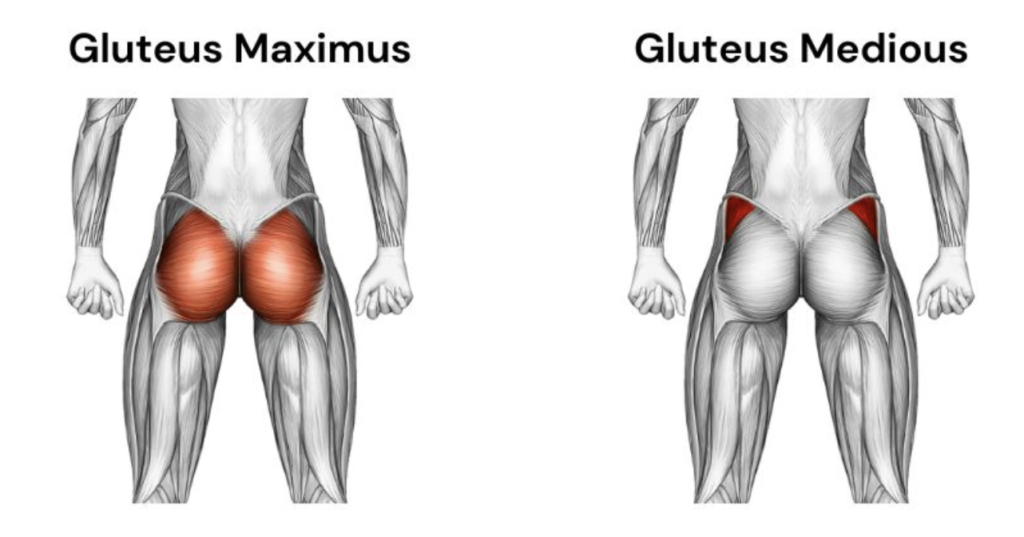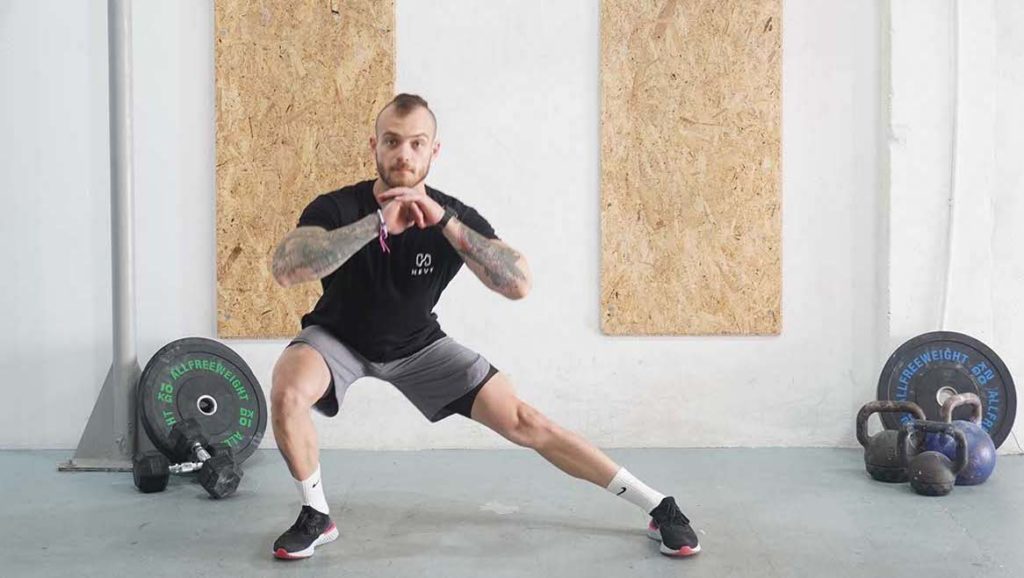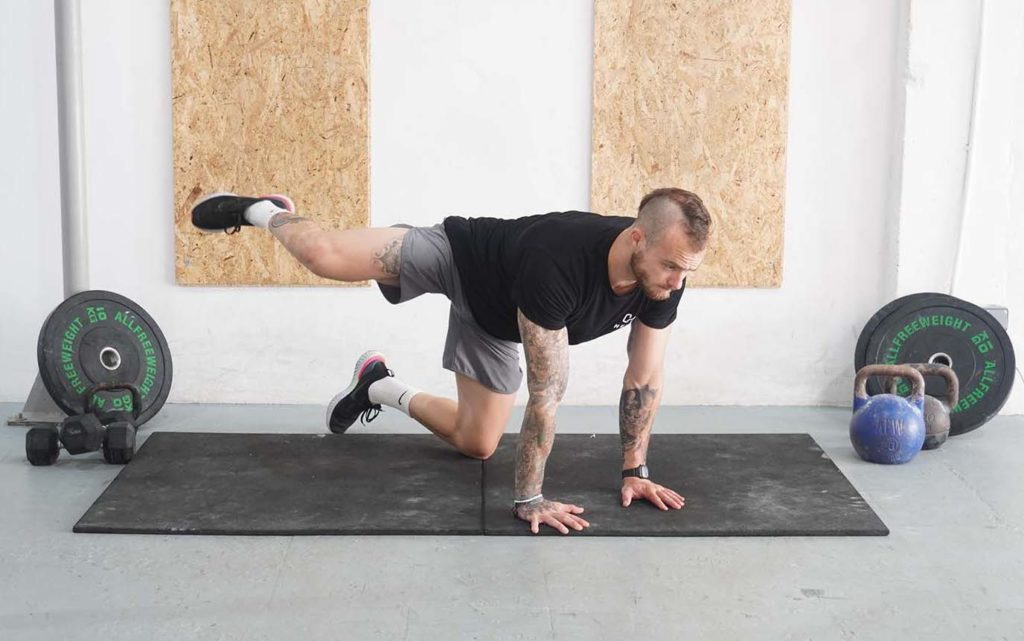The Benefits of the Lateral Leg Raises on Abduction Strength
What movements come to mind when you think of leg training? Like most, you probably consider the squat, deadlift, lunge, and other popular exercises. After all, having a solid deadlift or squat is a good benchmark for evaluating lower body strength, so it makes sense to work toward these goals. But what many people neglect is lateral motion, also known as abduction.
The lateral leg raise is an underrated but beneficial exercise that strengthens the glute minimus, a small muscle situated on either side of the buttocks (1). While small, the muscle is important for hip and knee stability and lateral movement. Doing lateral leg raises regularly is beneficial for improving your strength, becoming more stable, and reducing your risk of injuries.
The glute minimus is also essential for our daily life because it plays a role in walking, running, jumping, picking things off the floor, and much more.
How to do a Lateral Leg Raises
- Stand in front of a chair, squat rack, or something else you can hold onto for balance.
- Reach forward and grab the object with both hands.
- Bring your shoulders back, straighten your legs, and engage your abs.
- Shift your weight on your left foot.
- Take a breath and raise your right leg to the side while keeping the knee bent slightly.
- Lift your leg laterally as much as your mobility, flexibility, and strength allow.
- Hold the top position for a second and bring your leg back to the starting position as you exhale.
- Keep raising the right leg until you get tired.
- Shift your weight to your right foot and raise your left leg for the same number of repetitions.
What muscles do the lateral leg raises activate?

The primary muscle that works during lateral leg raises is the gluteus minimus. The muscle is situated on either side of the buttocks and links the hip and femur (1). Contracting the glute minimus brings the leg to the side.
Lateral leg raises also involve the rectus femoris to some degree (2). The muscle is one of four that make up the quadriceps and is the only one that crosses the knee and hip joints. As a result, the rectus femoris contributes during lateral leg raises by providing a stable knee and hip position.
Several core muscles also work during lateral leg raises. The rectus abdominis, transverse abdominis, obliques, erector spinae, and psoas major stabilize the torso and support the spine.
Tips on Proper Form and Technique
The most important thing to remember for lateral leg raises is to do each repetition smoothly and with control. Unlike leg swings that work great to warm up the lower body, you should do lateral leg raises slowly, making sure to engage your glutes well on each repetition.
You should also strive to raise your legs as much as possible but avoid using momentum or ‘thrusting’ motions to lift your legs a few extra inches. Only raise your legs as high as you can with moderate speed.
It’s also important to keep your knees in line with your hips. Avoid having your legs behind or in front of your body as you raise them to the side. Ensuring good alignment will allow you to engage your muscles optimally.
Maintain a rigid torso throughout the movement by keeping your shoulders back and abs engaged. While seemingly simple, the lateral leg raise is a challenging movement that requires good stability.
Variations and Modifications of the Lateral Leg Raises
1. Unsupported Lateral Leg Raise
The unsupported lateral leg raise is a variation where you do the movement standing, but you don’t hold onto anything for balance. The only difference is that the unsupported variation improves your balance more, which can be beneficial.
2. Lying Lateral Leg Raise
The goal with lying lateral leg raises is to get down on one side and raise your top leg toward the ceiling. The variation is more challenging because you have to overcome greater resistance to lift your leg than standing.
3. Weighted Lateral Leg Raise
The weighted lateral raise is the logical step forward as you build strength. You can attach an ankle weight or use a cable machine for extra resistance once you’re strong enough and bodyweight lateral raises don’t challenge you as much.
Mistakes to Avoid
The most common mistake related to lateral leg raises is using momentum to do each repetition. Doing so might help warm up your hips before a workout, but it’s not going to optimize muscular development. Do each repetition slowly and with complete control from start to finish.
Another mistake related to the first one is using momentum for the last couple of inches when raising your leg. Trainees with little leg strength compensate by thrusting their legs laterally to reach a greater height. Doing so is unnecessary because it adds nothing to each repetition. Raise your leg gradually, go up as high as possible, and lower it to the starting position.
The third mistake to watch out for is not progressively overloading the movement. People would start with the bodyweight version and never do anything else. But, as with other exercises, increasing the challenge is key to long-term improvements. So, begin with the standing bodyweight version but consider adding weight after a while. Lateral leg raises work great on a cable machine because of the consistent tension and good overloading potential.
Similar Exercises to the Lateral Leg Raises
Lateral Squat

Lateral squats are a fantastic compound exercise you should do for overall leg development. The movement has you raise one leg, step to the side, and descend, which activates your glute minimus, quadriceps, hamstrings, and glutes.
Curtsy Lunge
The curtsy lunge is a lesser-known leg exercise, but it works great for the lower body and shares some elements with the lateral leg raise. The movement has you bring one leg back and position your feet in a line before you descend. Doing so is good for overall stability and helps activate the glutes, hamstrings, quadriceps, and core.
Fire Hydrants

The fire hydrant is a similar movement to lateral leg raises because it trains the same muscles. But instead of doing it from a standing or lying position, you get down on all fours and bend your knees. Once in position, you have to bring one leg out laterally as much as you can. The leg abduction forces the glute minimus to work as it does on lateral leg raises.

